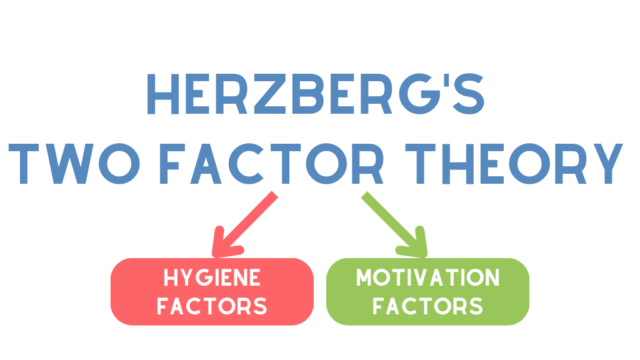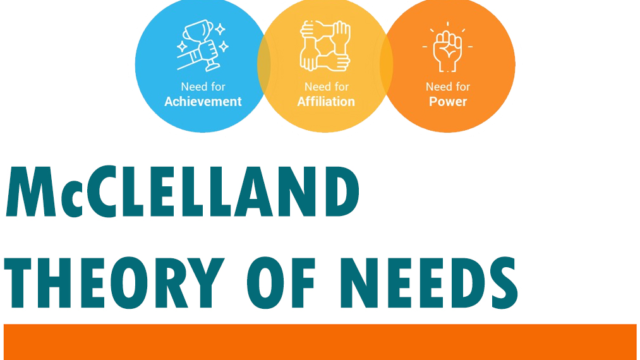What Does One Live On? Maslow’s Theory of Hierarchical Needs
What Does One Live On? Maslow’s Theory of Hierarchical Needs
Maslow's Theory of Hierarchical Needs, developed by Abraham Maslow, proposes that individuals are motivated by a hierarchy of needs. The theory suggests that individuals must satisfy their basic physiological needs before progressing to higher-level needs such as safety, belongingness, esteem, and self-actualization. Maslow's theory emphasizes the importance of understanding human motivation, personal development, and the pursuit of self-fulfillment. It provides a framework for recognizing the different levels of needs individuals strive to fulfill. It has practical implications for creating supportive environments that promote well-being and facilitate personal growth.
Brief Background:
“My childhood and boyhood were miserably unhappy. In retrospect, It seemed so dark and sad that I wonder how I accepted it so unquestioningly. I can find no single glimpse of happiness in all my memories.”
These words belong to those who stated that "self-actualizers" make up only 1% of the world population, Abraham Maslow, an American psychologist and academic who lived between 1908 and 1970. On this page, Abraham Maslow, whose writings on life motivation, personality, and what we live on have been talked about for decades, will be discussing the Hierarchy of Needs Theory and self-actualization, which basically states that we live to meet our needs and that these needs are in order of importance among themselves.

You can access a short documentary about the life and influence of Abraham Maslow through this link.
Research or Need:
Maslow's theory emerged as a response to the need for a comprehensive understanding of human motivation. Traditional psychological theories focused primarily on pathological aspects, but Maslow recognized the importance of studying healthy individuals and their drive toward self-fulfillment. His research aimed to identify the fundamental needs that influence human behavior and the hierarchical structure of these needs.
Summary of the Theory:
Maslow's hierarchy of needs consists of five distinct levels, ranging from basic needs to more advanced ones: physiological needs, safety needs, love and belongingness needs, esteem needs, and self-actualization needs. Originally, Maslow proposed that an individual must fully satisfy each level before progressing to the next. A more modern perspective is that these levels overlap. As people reach higher levels, they are more motivated toward these levels. Nevertheless, though their main focus is on higher levels, they will still continue to pursue lower levels of the hierarchy but with less intensity.
•Physiological needs: Physiological needs are the lowest level of the theory. These are the most essential things a person needs to survive. They include the need for water, food, shelter, warmth, rest, health, and sex. A person’s motivation at this level derives from their instinct to survive.
•Safety needs: The second level of the hierarchy of needs consists of safety needs, which involve an individual's desire for security and a sense of safety within their environment and daily life. Motivation comes from the need for law, order, and protection from unpredictable and dangerous conditions.
•Love and belongingness needs: The third level of the hierarchy of needs is love and belonging needs. Humans are social beings that crave interaction with others. This hierarchy level outlines the need for friendship, family, intimacy, and love. Humans have the need to receive and give love, to feel like they belong in a group. When deprived of these needs, individuals may experience loneliness or depression.
•Esteem needs: The fourth level of Maslow’s hierarchy of needs is esteem needs. Esteem needs encompass the desire for recognition, status, and a sense of being respected. Once individuals have fulfilled their needs for love and belonging, they seek to satisfy their esteem needs. Maslow further categorized esteem needs into two aspects: the need for respect from others and the need for self-respect. Respect from others relates to achieving fame, prestige, and recognition. Respect for oneself relates to confidence, dignity, competence, freedom, and independence.
•Self-actualization needs: The fifth and final stage of Maslow's hierarchy of needs is known as self-actualization needs. Self-actualization is the pursuit of fulfilling one's highest potential and achieving personal growth and self-discovery. At this level, individuals strive to become the best version of themselves and to fulfill their unique talents, aspirations, and abilities. It involves a deep sense of personal fulfillment and purpose and aligning one's values and beliefs with their actions. Maslow estimated that only one to two percent of people would reach the state of self-actualization.

In 1968, Abraham Maslow was interviewed about self-actualization, and you can access the video through the link.
Importance in the Field:
Maslow's theory holds great importance in the field of psychology and related disciplines. It provides a framework for understanding human motivation, personal development, and pursuing happiness. By recognizing the hierarchical nature of needs, the theory offers insights into individual behavior and guides interventions to promote well-being and self-actualization. It has been influential in various fields, including education, counseling, management, and personal growth.
Real-life Example for Each Levels of Maslow's Hierarchy of Needs:
• A person experiencing poverty and hunger will primarily focus on fulfilling their physiological needs, such as obtaining food and shelter, before considering higher-level needs. Once these basic needs are met, they can progress to seeking safety, belongingness, and higher-level fulfillment.
• Think about the law enforcement officers. Law enforcement officers aim to protect the citizens of a specific area. There are over 18,000 law enforcement agencies in the US at the state, federal, county & local levels. People rely on these agencies to keep themselves secure and safe. People demand this essential service from the government in every country. The breakdown of law enforcement may lead to the destruction of society as a whole.
• Consider a student who has recently moved to a new school. Initially, their need for belongingness and acceptance becomes crucial. They seek to form friendships and be part of a social group. Only after establishing a sense of belonging can they focus on esteem needs, such as recognition and achievement in academics or extracurricular activities.
• Imagine an employee who has already fulfilled their physiological and safety needs and has also established a sense of belonging within their team. At this stage, their motivation shifts towards gaining recognition and respect. They seek opportunities to showcase their skills and expertise, aiming for promotions and advancements within the organization. Additionally, they value the opinions and validation of their colleagues and supervisors. Achieving a sense of accomplishment, earning professional accolades, and being acknowledged for their contributions become important factors in fulfilling their esteem needs. This recognition and self-respect contribute to their overall sense of fulfillment and well-being.
• Let’s think about Mahatma Gandhi. Gandhi was a lawyer and activist who became the leader of a national movement against British rule in India. During his time in South Africa, he endured insults and physical attacks by members of the white ruling class. As he witnessed his fellow Indians being treated in the same manner, he became more assertive of his rights as a human being. This experience compelled him to assert his human rights more vigorously, advocating for his dignity and rejecting the oppressive social system as the status quo. The rest of his life consisted of political activism in both India and South Africa. He organized protests and utilized the act of civil disobedience. Maslow recognized Gandhi as a rare example of a person reaching self-actualization.
Criticisms of Maslow’s Theory of Hierarchical Needs:
One of the most common criticisms is about the order of the needs within the hierarchy. According to these critics, although it may be reasonable to prioritize physiological needs before self-actualization, individuals do not always pursue or achieve these needs in a sequential manner. For example, Maslow argued that self-actualization is only possible once an individual has fulfilled their basic needs. However, recent critics suggest that there are instances where the inability to meet one's basic needs can help individuals identify their self-actualization goals. For instance, someone may have a stable career for a long time, fulfilling their safety needs. However, if they lose their job, they may realize their previous career was not satisfying. Needing another source of income might spur them to pursue the job they truly want.
There are several other motivation theories after Maslow published his work. You may check other motivation theories here.
Relevance for Trainers:
By understanding the hierarchy of needs, trainers can design learning environments that support fulfilling these needs. They can create a safe and inclusive atmosphere that promotes social connections, fosters a sense of belonging, and enhances self-esteem. Moreover, trainers can guide individuals toward self-actualization by facilitating personal growth, encouraging the pursuit of passions, and providing opportunities for self-expression and development.
You can access a summary of Maslow’s Theory of Hierarchical Needs through this link.
References:
https://archive.org/details/righttobehuman00edwa/page/6/mode/2up?view=theater
https://www.simplypsychology.org/maslow.html
https://www.ncbi.nlm.nih.gov/pmc/articles/PMC4130906/
https://corporatefinanceinstitute.com/resources/management/maslows-hierarchy-of-needs/
Video
Founder
Related Topics
What Does One Live On? Maslow’s Theory of Hierarchical Needs 0 reviews
Login to Write Your ReviewThere are no reviews yet.








